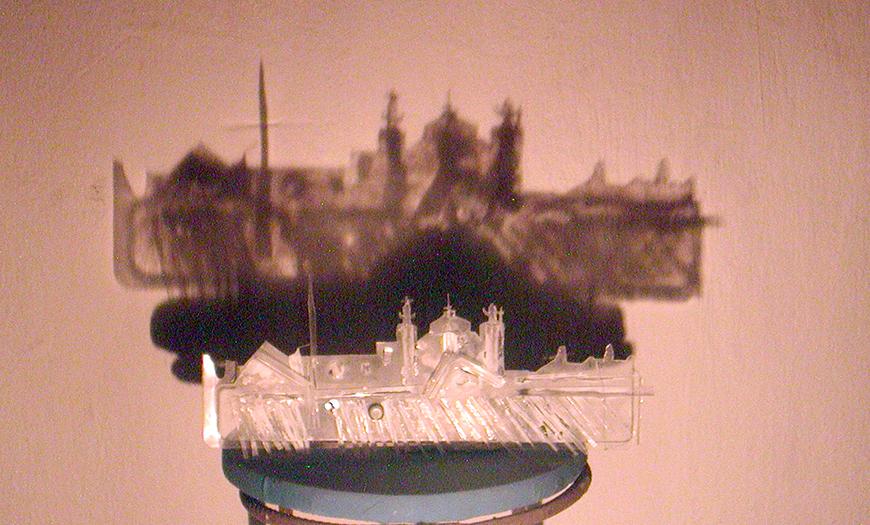
Ana Teresa Fernández, Untitled (2006), plastic trash and oil lamp, from Nan Mitan-an installation at Fondation Sant D’A Jakmel, Haiti.
Building Feelings / Feeling Buildings: Mapping Urban Memory in an Ahistorical Age (AMST 6819, ARCH 6408, ENGL 6919, LSP 6819, SHUM 6819)
Wednesdays, 10:10 a.m.–12:05 p.m.
Course Instructor: Ella Maria Diaz (assistant professor of English and Latina/o Studies)
In 2014, architect and author Marc Kushner praised the role of social media in shaping the future of our built environments. In a TED Talk, he skipped over histories of social, economic, and political exclusions in modern American cities, including early 20th-century redlining practices, gentrification, and urban renewal projects of the mid to late-20th century, to declare, "Architecture is not about math and it's not about zoning; it's about those visceral, emotional connections that we feel to the places that we occupy."
This class asks how built environments make us feel by connecting different vocabularies and methodologies used in academic fields (public history, ethnography, cultural studies, etc.,) and visual and performance art to map architectures of identity and unpack notions of cosmopolitanism and nationalism. The early 20th century witnessed unprecedented migrations of racial-ethnic and working-class peoples in the U.S., many of whom moved from rural to urban environments. These migrations shaped communities that catalyzed populist arts movements in the 1960s and 1970s civil rights era that defined the look and feel of many American cities—as murals, posters, and street art are now integral to their visual and cultural landscapes. Today, urban and community art initiatives are promoted by municipal redevelopment agendas with corporate sponsorships. There is little to no recognition of the liberationist agendas in which murals, graffiti, street art, pop-up galleries, and other art spaces materialized.
We will consider the absence of local histories in the remaking of urban landscapes as global art networks and transactional spaces in the neoliberal age. Moving between U.S., Latin American, and Caribbean cities, the class explores popular arts movements in connection with relational aesthetics, social sculpture, and public art interventions from a range of artists and collectives including Anne Bray, Felix Gonzalez-Torres, Judith Baca, Guillermo Gómez-Peña, Regina José Galindo, INDECLINE, Ana Teresa Fernández, and others.